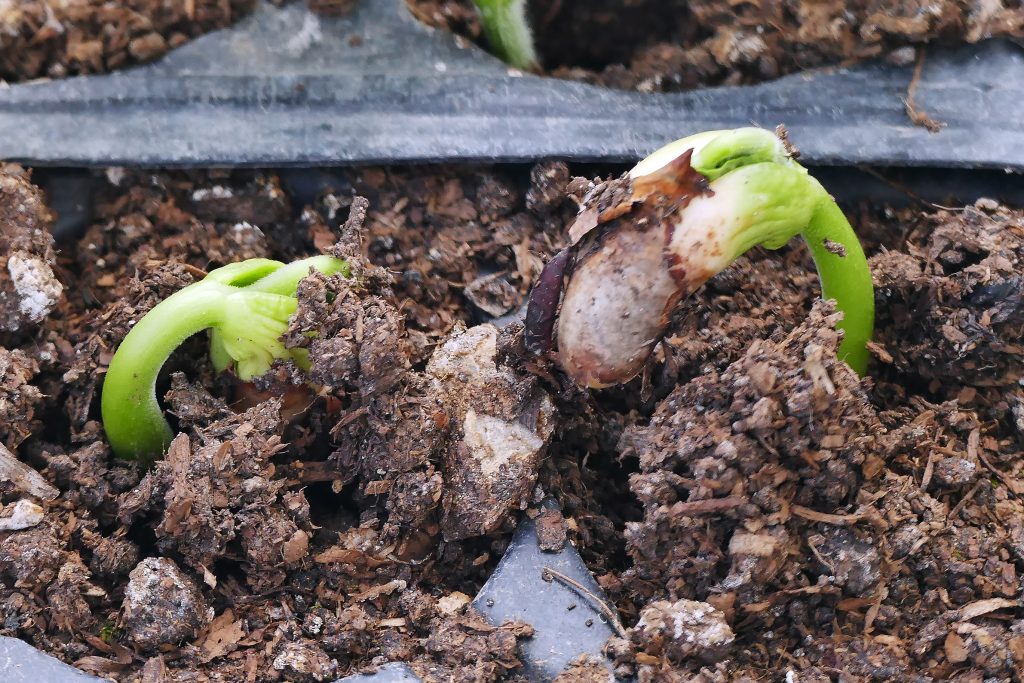Not everyone has a large yard where they can plant a vegetable garden. If you’re short on space, creating a milk crate garden is one option you might want to consider.
How do you plant a milk crate garden? You will need a milk crate, some soil, landscaping fabric to line the container with, zip ties to hold everything in place and scissors. Plus seeds of your choice and somewhere warm and sunny to put your new garden!
There are some essential things to keep in mind if you want to get the most out of your milk crate garden. Read on to learn more!
What is a Milk Crate Garden?
You’ve probably seen milk crates in the dairy section of your local grocery store. They’re plastic crates that are usually a bright blue, green or red color.
Dairy processors use these crates to ship dairy to stores and then they are returned once they’re empty. It’s a more environmentally-friendly way of transporting milk than using disposable containers.
In recent years, there’s been a new trend of using milk crates as containers in your garden. Simply put a liner in them and fill them with soil and you can have a milk crate garden in no time!
Where to Get Milk Crates

You might have a relative with a milk crate or two in their home that they’re using to store things. It’s usually a mystery as to where they actually came from, though!
You can’t just take empty milk crates from the supermarket or expect them to give them out for free. Vendors pay a deposit on the crates and get money back when they return them to their dairy suppliers. So they aren’t exactly looking to get rid of them.
Stealing a plastic crate might seem like a petty crime. In most places it’s actually taken quite seriously though. If you’re caught with stolen milk crates you can be fined between $200 and $1,000 depending on what state you’re in. If you’re in a particularly strict jurisdiction, it might even come with a little bit of jail time!
Obviously, stealing milk crates from outside of grocery stores is out of the question. So where do you actually get milk crates from?
The good news is that some home garden or hardware stores will sell milk crates. This includes stores like Home Depot or Lowes in North America or B&Q in the UK.
You can also go directly to companies that sell packaging and shipping supplies to retail sellers. Small businesses need to get their boxes, plastic bags and food packaging from somewhere. These sellers often also carry milk crates for purchase. One large company with locations throughout North America that carries milk crates is Uline.
If in doubt, do a Google search for “milk crates” and your country or city name. You should be able to find a supplier selling standard 16-quart milk crates for between $10 and $15 each.
Normally you can get a bit of a discount for buying in bulk. If you’re planning a large milk crate garden, it’s worth buying all of your crates at once.
Materials Needed for a Milk Crate Garden
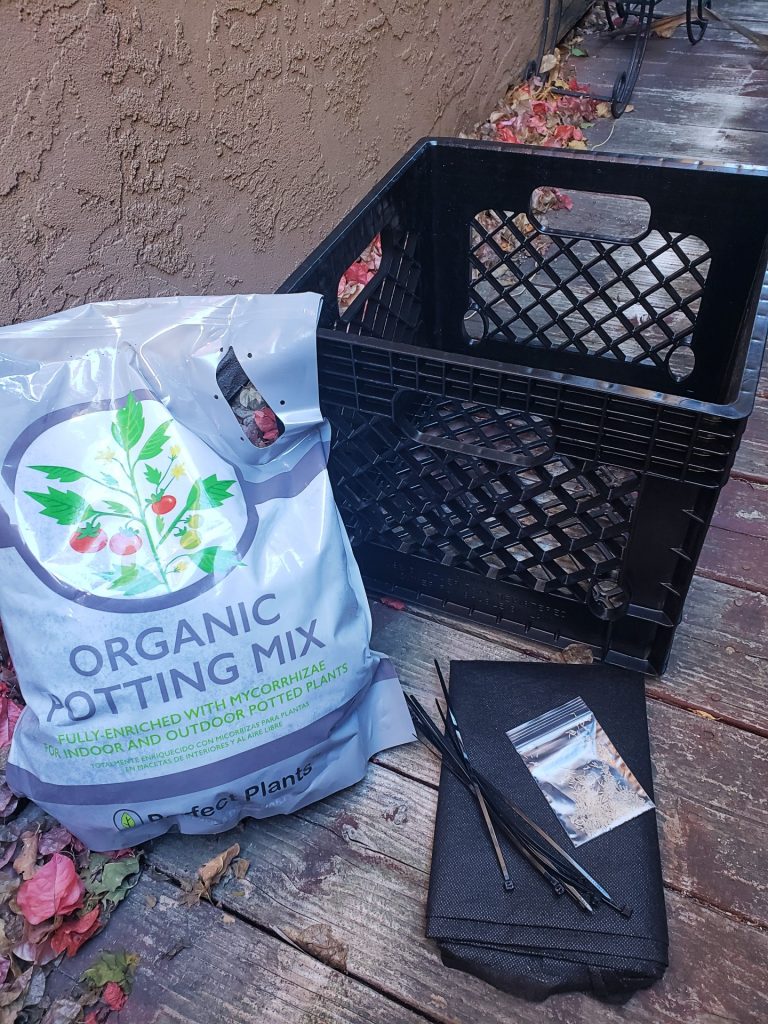
Here’s what you’ll need to get started on your milk crate garden.
- One milk crate
- A compost-based soil or well-draining potting soil
- A non-woven, lightweight landscaping fabric
- Sharp scissors or shears to cut your fabric
- Zip ties to hold your fabric in place
- Seeds or seedlings of your choice (vegetable or herb)
Sourcing Your Milk Crate Liner
Going to your local garden center to buy landscaping fabric isn’t the most cost-effective way to create your milk crate.
As an alternative, you can use any fabric that allows for proper water drainage while still retaining the soil.
Burlap is a common choice that can be purchased for cheaper than landscaping fabric. You can also search on Amazon for “milk crate liner” for some purpose-made products that are already cut to the correct size.
A standard-sized milk crate is 12″ x 12″ x 12″. However, we recommend using a piece of fabric that’s at least 24 inches wide. You want to allow for some of the fabric to drape over the sides. That way you can secure it to the crate and it won’t be pulled inside from the weight of the soil.
How Do You Make a Milk Crate Garden? (Step by Step)
1. Place your milk crate on the ground with the open side up.
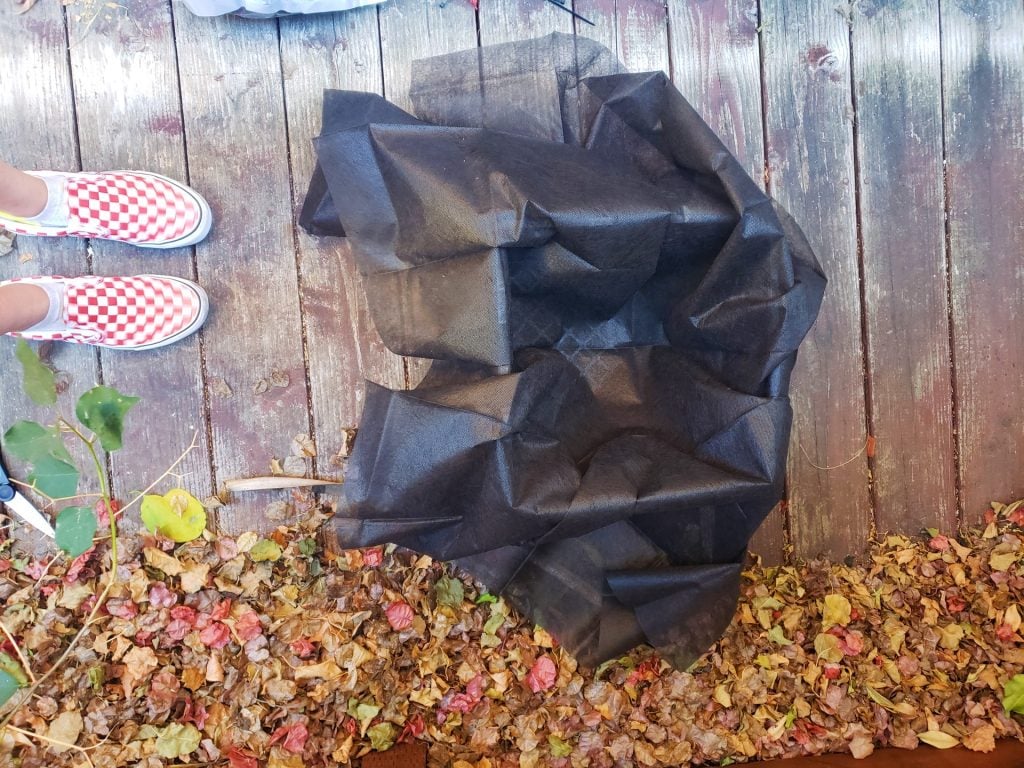
2. Put the landscape fabric into the milk crate, one layer thick. Make sure that the material gets all the way into the corners at the bottom of the crate. We recommend measuring out your first crate before cutting. That way you can decide how much extra fabric you want to leave hanging over the edges.
3. Once you’re happy with the size of your fabric, you can cut it with scissors. For thicker materials it may be easier to use a pair of garden shears. (OPTIONAL: You can leave your fabric in the crate and fill it with soil at this stage before cutting. However, we find it’s easier to get straight edges by cutting and then filling.)
4. Use the sharp tip of your scissors or shears to make holes in your fabric underneath the crate’s handles on all four sides. Leaving plenty of extra fabric will help to prevent ripping and tearing.
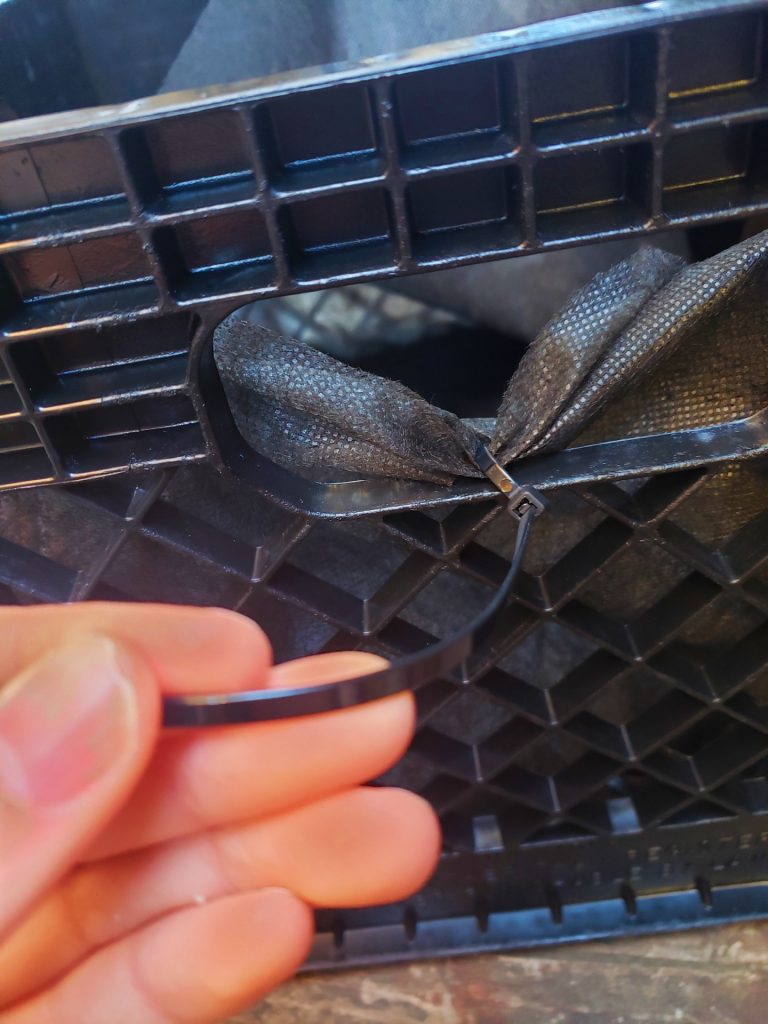
5. Thread zip ties through the holes to properly secure the fabric to the crate.
6. Fill your lined crate with compost or potting soil. We recommend also adding a small amount of slow-release fertilizer at this stage.
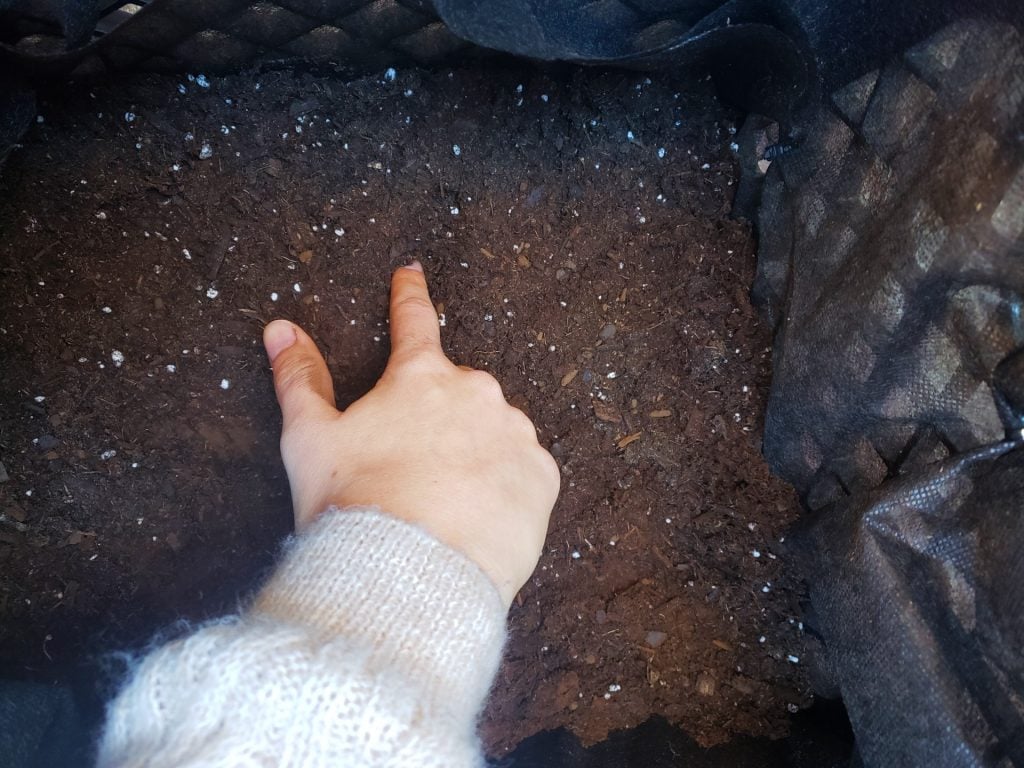
7. Using your hand or a small trowel, dig holes in the soil to plant your seeds or seedlings in. Follow instructions on seed packets for recommended depth and spacing. Fill the hole and pat it down to ensure good contact with the seed or roots.
8. Thoroughly water your milk crate garden. You want to add enough water that it begins to drain out through the fabric. If no water is coming out, you may have drainage problems. You can fix this by simply poking a couple of holes through the fabric on the bottom of your milk crate.
At this point your crate is all prepared and ready to start growing some healthy and nutritious produce for you!
How to Maintain a Milk Crate Garden
A milk crate garden will have similar requirements to an herb garden or any other kind of small growing container.
Watering
Watering will be your most frequent task for keeping your milk crate garden healthy. You don’t want to overwater, but you also don’t want to underwater. We recommend watering every two or three days when the surface of the soil is dry to the touch. If it’s still damp, you don’t need to water again yet.
During the hottest months of the year you may need to water your milk crate garden every day. Particularly if it’s in a location that gets full sun exposure. Since a crate can only hold a small amount of soil, it dries out faster than it would in the ground.
Weeding
Weeding is also important for keeping your milk crate garden in top condition. There’s a limited amount of space and you don’t want your crops to be competing with other plants.
Using soil from your yard will increase your chance of sprouting weeds. However even a high-quality potting soil won’t protect your garden from weeds indefinitely. Tiny seeds from wild plants like dandelions can float on the wind and end up in your garden.
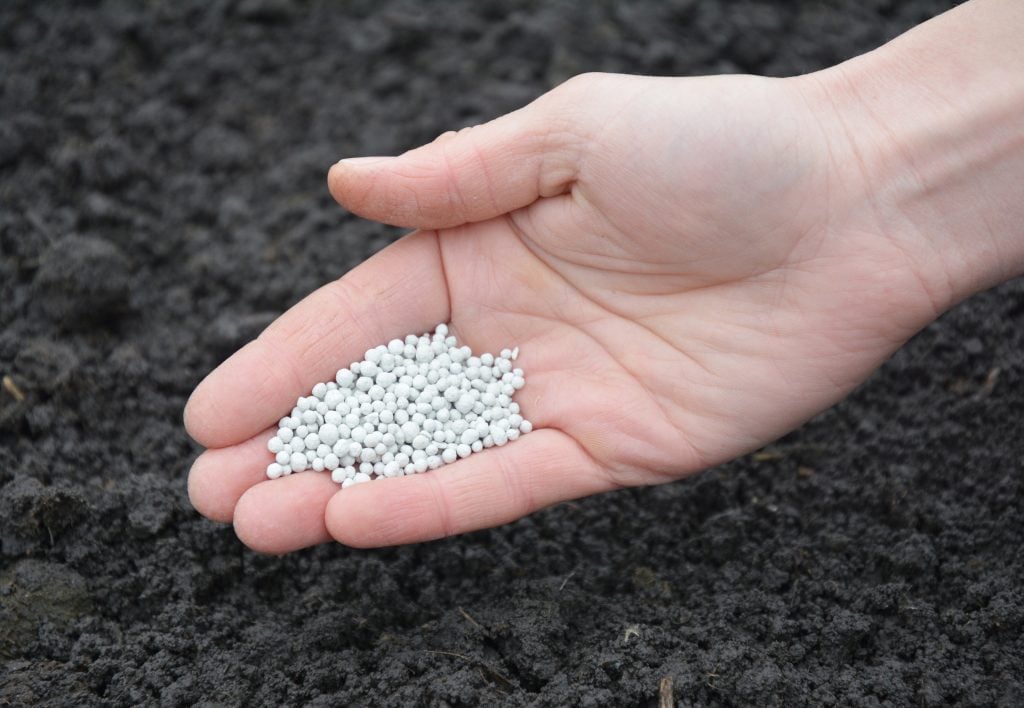
Fertilizing
Your milk crate garden has limited space that can only hold so much soil. There’s a finite amount of nutrients that plants can extract from the soil before it’s exhausted. A soil that’s low on nutrients will produce spindly and weak plants. If your soil quality gets bad enough, many varieties of plants won’t grow at all.
That’s why it’s important to add some compost or fertilizer to your milk crate garden from time to time. There are no naturally decomposing items in a milk crate garden like leaves and sticks that help to maintain soil quality over time. You’ll need to add your own inputs to keep your garden healthy.
Managing Roots
In a traditional garden, plant roots are left in the ground between seasons and simply rot back into the soil.
However in a milk crate garden, you don’t have the space and time for that. At the end of the growing season, the soil in your crates will likely be root-bound and not a great place to grow again next year.
If you’re growing annuals, at the end of the season you’ll want to dump the soil out on a tarp and separate out any roots. Otherwise you’ll end up with more roots than soil before long! Plant roots can quickly fill your entire crate and not give much space for plants to grow next year.
Roots can be composted and you may need to top up your crates with a bit of extra soil to make up for the lost space.
If you’re looking to create a more sustainable garden, we have an article in our Resource Hub called How To Start A Permaculture Garden: Step By Step Beginner’s Guide that will interest you!
How Much Weight Will a Milk Crate Support?
A standard milk crate is designed to support a minimum of 40 pounds of weight with the open side facing up.
They are plenty strong enough to be filled with soil for creating a milk crate garden.
When milk crates are used to ship and store dairy products, they can be stored with up to nine full crates stacked on top of one another.
You can use them this way in your garden as well! Stacking milk crates is a great way to make use of vertical space.
We do recommend inspecting your milk crate garden from time to time to be sure that they’re still in good condition. Sunlight and the elements can weaken their structure over time. Leaving plastic milk crates outside in below-freezing conditions over the winter can also make them more brittle.
Milk Crate Garden Ideas
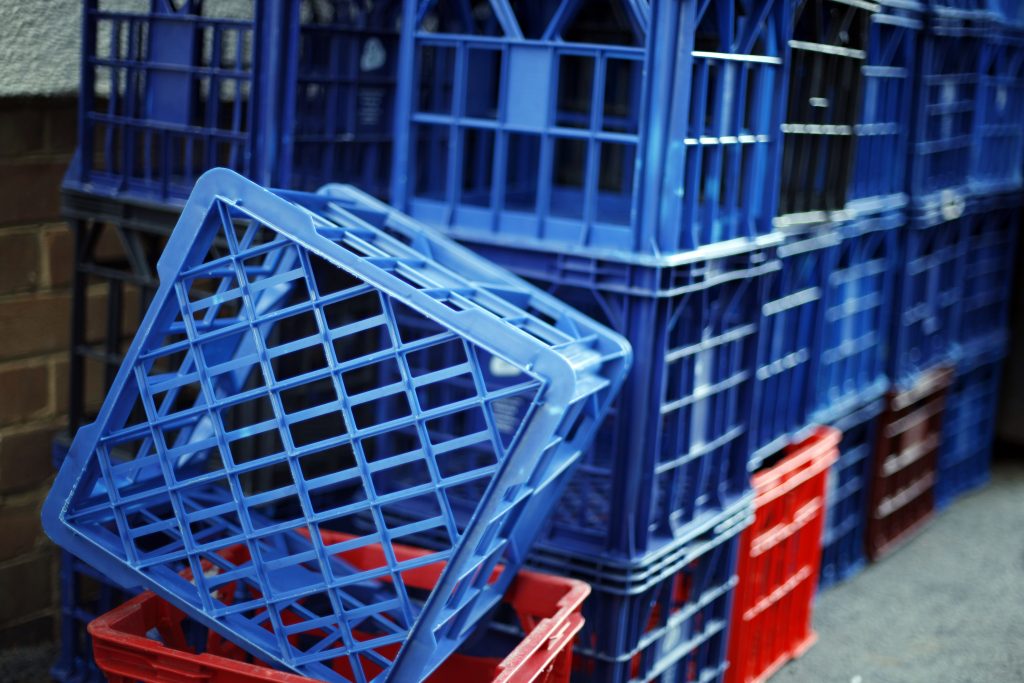
Not sure what to do with crates in your garden? Here are a few milk crate garden ideas to consider.
Milk Crate Garden Beds
You can put several milk crates side by side to create a raised garden bed with them.
If you have a yard, it’s normally more economical to make the walls of your raised bed out of wood or brick. However milk crates are a great self-contained solution if you want to grow on an apartment balcony, deck, or somewhere else that you don’t want to make a mess.
A milk crate garden bed is also an excellent choice for renters because you can easily pick up and go if you decide to move. Even in the middle of the season!
Growing inside the city? Be sure to check out our article Urban Farming Ultimate Guide and Examples in the Resource Hub!
Milk Crate Vertical Gardens
As we mentioned earlier, milk crates can be stacked vertically. This can give you lots of extra growing space along walls.
To reduce the risk of damage or injury, we recommend only stacking milk crates three or four boxes high. While they’re technically designed to stack up to nine crates high, that’s for indoor conditions in factories and stores. Out in nature you also have to contend with strong winds, uneven water distribution and other factors.
If you do decide to start stacking heavy crates on top of one another, safety precautions should be taken. Otherwise they could easily topple over and hurt you or your property.
Bolting your milk crates to a sturdy wall will keep them secure.
Our favorite thing about a milk crate vertical garden is how customizable it is. You can make it as large or as small as you want it. You can cover an entire wall with milk crates. Or you can simply stack three crates on top of each other to create a tower garden.
What Kind of Plants Grow Best in a Milk Crate Garden?

The main thing to keep in mind is that you’ve got a limited amount of space and depth when you’re growing in a milk crate garden. Especially if you’re stacking crates on top of one another.
For vertical milk crate gardens, it’s best to grow smaller crops like lettuce and spinach. Vining plants like cucumbers or strawberries can also make good use of the vertical space.
You’ll need holes in the fabric on the side of the milk crates for vines and leaves to come out. If your crates are stacked, plants won’t be able to get any light from above.
If your milk crate garden is laid out in beds instead of stacking, you have more options available.
Other Plants to Consider
Believe it or not, you can even grow larger plants like peppers, cherry tomatoes, cabbages and zucchini in milk crate gardens. However you’ll only be able to fit one of each plant per crate.
Herbs
Herbs are also a great choice for planting in milk crate gardens. Especially herbs like mint that are notorious for spreading and taking over entire gardens. Planting in a crate is a way to contain them and only allow them to grow where you want them.
Plants to Avoid
Root vegetables are typically not a good choice for milk crate gardens. Although, you might be able to get away with radishes, small varieties of beets and turnips, garlic and onions. Crops like carrots and parsnips are questionable, as the shallow soil may not give them enough soil to develop properly. Larger root vegetables like potatoes, rutabagas and celeriac are out of the question.
Plants that grow high like beans, peas and corn aren’t great choices either. They will shade out your other crates and you won’t be able to fit enough plants to make them worth it.
We recommend using square foot gardening techniques for milk crate gardens. That way you can fit as many as nine spinach plants or 16 lettuce plants in one crate!
Final Thoughts
A milk crate garden can be a great alternative to growing in the ground or in traditional raised beds.
They are particularly great for people living in an apartment or renting their home. You can set up a milk crate garden without creating any mess. Plus it can be easily disassembled for moving or storage as-needed.
Milk crate gardens aren’t the ideal solution for everyone. They require more frequent watering and fertilizing. Plus their small capacity puts limits on the types of plants and how many of them you can grow.
If you’re just getting started with gardening or only want to grow a few plants, milk crate gardens can be a great introduction.
And once you’re ready to move past milk crate gardens, check out our article on 21 Of The Best Small Scale Farming Ideas.
